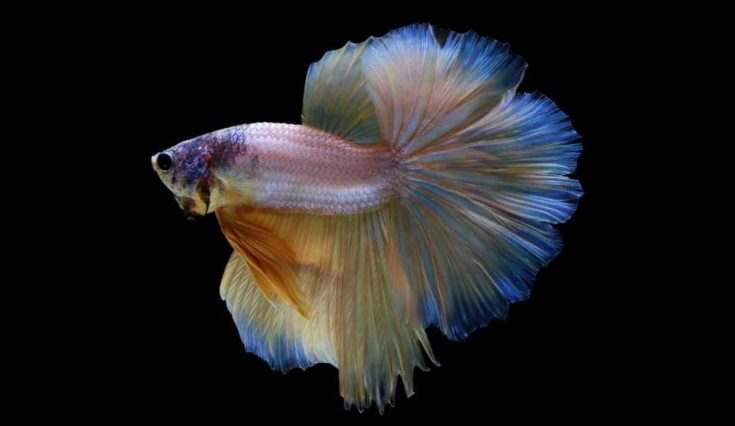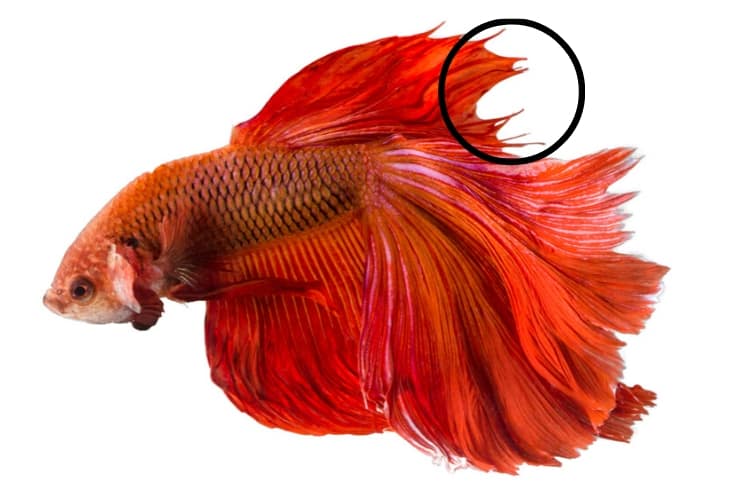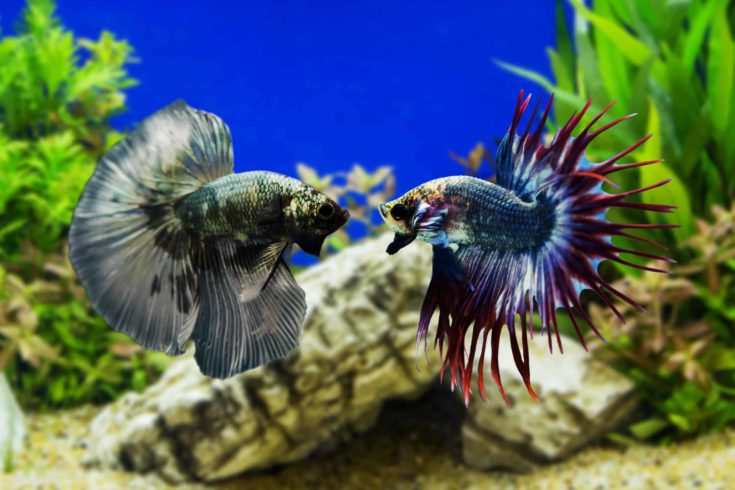Are you thinking of buying a betta fish? Are you already an owner who wants to breed from your beloved betta? If that’s you, you’ll need to know how to tell the difference between a male and female betta fish.
In this article, I tell you everything you need to know about determining betta fish gender.
Wild vs Domesticated Betta Splendens

Wild betta fish look completely different from those that you see in pet stores.
Male wild bettas lack the flowing fins and brilliant array of colors that are boasted by their captive-bred relatives, being a somewhat dull, gray-green color with short, stubby fins. In wild betta fish, females look very similar to males, although they are slightly smaller.
Sexual Dimorphism
“Sexual dimorphism” is a term that’s used frequently in articles about tropical fish, including bettas.
Basically, sexual dimorphism refers to the degree of difference between males and females of the same species. The terms “weak” and “strong” are also applied to a creature’s sexual dimorphism.

In the case of betta fish, it’s true to say that wild bettas have a weak sexual dimorphism. In other words, it’s very difficult to tell the sexes apart. However, captive-bred betta fish have strong sexual dimorphism because the male of the species is very different in looks and behavior to the female.
That’s because captive bettas are bred for their spectacular finnage and rainbow array of colors, including metallics. Wild betta fish are naturally muted in color and have short fins and tails.
Over the years, the basic betta genes of wild fish have been toyed with by enthusiasts to create the beautiful anomalies that result in the strong sexual dimorphism of today’s captive-bred bettas.
Pet Store Stocking
How you purchase your betta fish can be an indicator of the fish’s gender.
In my experience, it’s generally male betta fish that you find for sale in small pet and fish stores. That’s because the males of the species are more eye-catching with gorgeous bright colors and flowing fins. Consequently, most hobbyists want a male betta, rather than females, which are drab in comparison.

You can buy female bettas too, but I’ve found that it’s usually more specialist aquarist stores that sell them.
So, if you buy a betta from a small, regular pet store, ask the assistant if the fish is male or female. If they’re experienced, the assistant should know how to tell the gender of a betta fish.
However, if in doubt, assume that the betta is male.
Physical Differences in Appearance
Female and male bettas are very different in appearance:
Color

| Male | Female |
|---|---|
|
|
Fins and Tail

| Male | Female |
|---|---|
|
|
Body Shape

| Male | Female |
|---|---|
|
|
Size
Juvenile male and female bettas are the same sizes.

| Male | Female |
|---|---|
|
|
Egg Spot
If the fish is female, you will see a tiny white dot between the ventral and anal fins.
The white dot is the fish’s “egg spot” or ovipositor. The ovipositor is part of the female fish’s sexual anatomy and is used to deposit her eggs during spawning.
The betta’s egg spot is so tiny that it can be difficult to see. Try taking a photo of your betta from the side and then magnify the photo to see the spot.

| Male | Female |
|---|---|
|
|
Betta Beard
Betta fish have an opercular membrane situated underneath the gill plate cover. The membrane is visible when the fish flares its gill plates, resembling a “beard.”

| Male | Female |
|---|---|
|
|
Behavioral Differences
There are some notable differences in the behavior of male and female bettas:
Flaring

| Male | Female |
|---|---|
|
|
Aggression

| Male | Female |
|---|---|
|
|
Bubble Nest Building

| Male | Female |
|---|---|
|
|
In Conclusion
Now you know how to tell the difference between female and male bettas!
In general, males have extravagant finnage and bright colors, whereas females have short fins and are less gaudy in appearance. Consequently, it’s usually male fish that you’ll find for sale in regular pet stores.

Male Betta can also display stripes when stressed. My King Betta Clyde displayed them when I first got him. I think his larger size made it easier to notice them. I had never heard about it with males until I got him. But after some research I found others who had reported the same with stressed males.